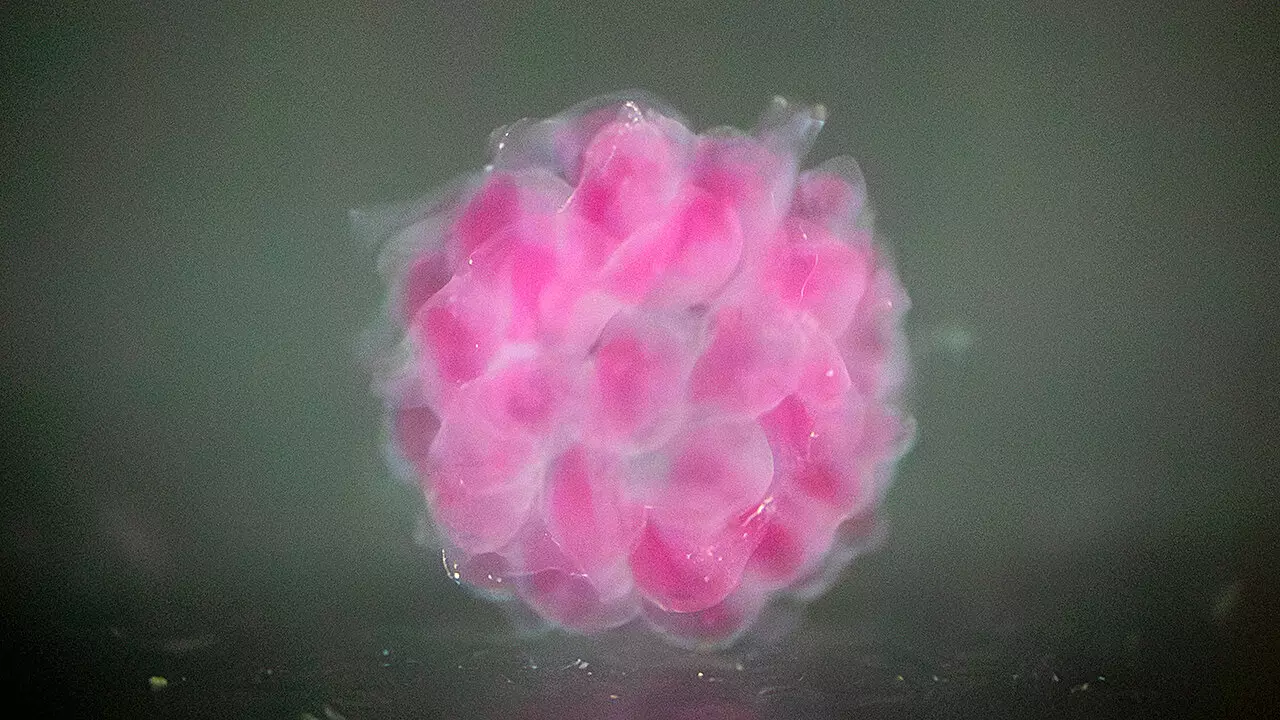Scientists at the University of Virginia School of Engineering and Applied Science have achieved a groundbreaking milestone in the realm of bioprinting, potentially paving the way for on-demand human-compatible organ manufacturing. A collaborative research effort led by Assistant Professor Liheng Cai and doctoral candidate Jinchang Zhu culminated in the creation of biomaterials tailored to replicate the mechanical properties of various human tissues. This significant advancement represents an unprecedented leap over existing bioprinting technologies, enhancing our ability to fabricate complex biological structures for therapeutic applications.
Their research, detailed in an article published on July 13 in *Nature Communications*, introduces the innovative digital assembly of spherical particles (DASP) technique. This methodology allows for the precise deposition of biomaterial particles in a supportive matrix, both of which are water-based. By employing this technique, the team has taken a significant step forward in constructing 3D structures that offer a conducive environment for living cells to prosper—a crucial aspect of bioengineered organ development.
Understanding Voxel Technology and Its Implications
The leading-edge concept of “voxels,” three-dimensional analogs of pixels, emerges as a focal point in this discussion. The introduction of what Zhu describes as a functional voxel marks a new chapter in biomedical innovation. Essentially, these hydrogel particles can serve as fundamental building blocks for future constructs, from organoids—3D cellular models functioning like actual human tissues—to more complex structures aimed at studying diseases and testing prospective treatments.
What sets Cai and Zhu’s research apart is the remarkable customization ability that their bioprinting method facilitates. By addressing the mechanical properties of their hydrogel materials, they are not merely constructing rigid structures; they are tailoring them to exhibit the dynamic attributes of human tissues. This capability allows for the printing of organoids that can effectively model human disease, facilitating deeper insights into biomedical challenges.
The Science Behind the Hydrogels
The innovation behind these hydrogel particles lies in their intricate design. Crafted through an engineering process that fine-tunes the arrangement and chemical bonds of single-molecule monomers, the resultant polymer hydrogels closely mimic human tissue. Encapsulation of human cells within these hydrogels offers enhanced biocompatibility and reduced toxicity compared to traditional hydrogel bio-inks. Their double-network hydrogels, a critical advancement, are not only mechanically robust but also finely adjustable to mirror the diverse physical characteristics of human tissues effectively.
Cai and Zhu previously introduced the DASP concept in 2021, showcasing its capability to simulate organ function—specifically a pancreas that responded to glucose by releasing insulin. However, their earlier version, DASP 1.0, was limited in its tunability and produced only fragile hydrogels. The newly revised iteration, DASP 2.0, represents a significant advancement with its double-network hydrogel bio-inks formed utilizing “click chemistry” for rapid cross-linking. The progress made in their bioprinter design, particularly the addition of a multichannel nozzle capable of mixing hydrogel components on-demand, stands testament to the technological strides the team has made.
The Challenges and Future Potential
Despite the inspiring advancements, the road ahead is no bed of roses. The precise manipulation of viscoelastic voxels poses fundamental and technological challenges within the realms of soft matter science and 3D bioprinting. Cai previously emphasized the importance of managing drop formation and swift detachment from the nozzle to replicate the nuanced mechanical properties of human tissues effectively.
If realized fully, the implications of DASP technology could be monumental. Potential applications span a wide spectrum, including artificial organ transplantation, advanced modeling of diseases and tissues, and drug candidate screening. The promise of cultivating functional human organs through bioprinting not only excites the scientific community but also holds hope for countless individuals awaiting organ transplants.
The journey from a conceptual framework to practical application is complex, but with each advancement, researchers inch closer to making the dream of bespoke human organs a tangible reality. The transformative potential of DASP offers optimistic prospects for the future of medicine, reinforcing the belief that the limitations of medical science today may soon be challenged by innovative engineering solutions tomorrow.


Leave a Reply